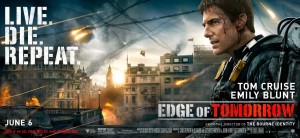What’s next for Customer Experience Enabling technology? David Turner of Webhelp UK looks into the future to revel the next big thing.
 The Guardian recently featured a story where they examined the 2002 Tom Cruise sci-fi movie Minority Report to see which of the technologies had become a reality. This is a favourite topic of technology journalists who often remind people that just about every technology you see in Star Trek, except the Warp Drive, has become a reality.
The Guardian recently featured a story where they examined the 2002 Tom Cruise sci-fi movie Minority Report to see which of the technologies had become a reality. This is a favourite topic of technology journalists who often remind people that just about every technology you see in Star Trek, except the Warp Drive, has become a reality.
The Guardian story focuses on the user interface. In the movie Tom Cruise would wave his arms around wildly throwing files and data around on a wall-sized screen. That certainly hasn’t happened, we are all still curled up over small devices, but there is an element of the tech in this movie that has worked out and it relates to the customer experience.
Billboard posters use remote retinal scans so the poster in the street knows who is approaching and the ad can be changed appropriately. So a poster for cars can be changed to a beer, based on the preferences of the film character that passes by.
This almost exactly reflects how Facebook has been experimenting with Place Tips for most of this year. Many people use location-based tips and review services such as FourSquare or TripAdvisor, but it’s generally up to the customer to go to their phone and check out what’s in their immediate vicinity. What Facebook is doing is making the process seamless – pushing the information to people who are nearby, and they have a much bigger mobile audience.
This has a number of applications for customers. If you are outside a restaurant and your phone buzzes, it could be tips on the best place to ask for a table, or how to ask for an off-menu special. If you are inside a national park, it could be tips on where to find the best views. If you are inside a department store, it could be advice on where to find the customer service team.
However, it could also be time-limited offers. Retailers know if customers ‘like’ their brand via social channels. If they can also spot when you are physically close to a store and use your purchasing history to send a one-time one-hour-only offer direct to your Facebook then that is a bonus for the customer.
There are two issues I foresee, although this is already a reality. First is that some customers may be offended. Many are not aware of how to easily adjust their Facebook security and privacy settings and will blame retailers for “spam” rather than Facebook for facilitating it. Second, this is a communication process that operates completely outside the network of the corporate. The entire strategy depends on the ongoing success of Facebook. They have such market dominance now that it looks OK to assume that will not change in the short term, but I wouldn’t expect any company to build a long-term strategy based on services they cannot control.
I think this is a great example of a technology from Minority Report that has become a reality, and in a much more sophisticated way that the clunky billboard in the street featured in the movie. The Guardian really should have use the customer experience example in their feature!

David Turner is Chief Executive Officer at Webhelp UK – Customer Experience Innovators
Visit the Webhelp UK Website
View their Company Profile




